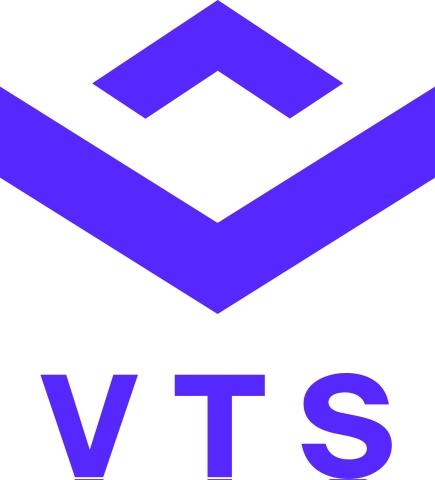Demand for Office Space Sluggish in January, Persistence of Remote Work and COVID-19 Variants Key Contributors
Demand for Office Space Sluggish in January, Persistence of Remote Work and COVID-19 Variants Key Contributors
Despite challenges, demand for office space still up 76 percent year-over-year, according to a VTS Office Demand Index (VODI) analysis.
NEW YORK--(BUSINESS WIRE)--New demand for office space in January was unchanged from December, remaining at 58 percent of its pre-pandemic level but up 75.8 percent year-over-year. This marks the fourth straight month of relative stability in the VTS Office Demand Index (VODI) since peaking in summer, and falling in the second half of 2021. The VODI tracks unique new tenant tour requirements, both in-person and virtual, of office properties in core U.S. markets, and is the earliest available indicator of upcoming office leasing activity as well as the only commercial real estate index to explicitly track new tenant demand.
Nationally, new demand for office space grew 163.6 percent, peaking at 87 percent of normal, in the first eight months of 2021 before falling sharply and leveling off in the following months. Since October 2021 the VODI has hovered between 61 and 58 and is depressed relative to pre-pandemic levels, despite a healthy labor market. A VODI of 100 is a benchmark for pre-pandemic normal.
“When considering office space needs in 2022 and beyond, COVID-19 matters but so do employee preferences,” said Nick Romito, CEO of VTS. “In a market where employers are having a hard time attracting and holding on to talent, what we are finding is that employee preferences with respect to hybrid or remote work are exerting increasing influence on employers’ decisions.”
Office-using employment rose 1.15 percent quarter-over-quarter from September to December 2021 (the latest reading), on track for a 4.68 percent annual growth rate. This, as 467,000 jobs were added in January, and job postings, perhaps an indicator of employers’ future office needs, rose 27.8 percent.
Six of seven VODI cities remain flat, D.C. demand climbs
Local VODI movements in January were slight. With the exception of Washington, D.C., all VODI markets had month-to-month change that was less than half of the average month-to-month change before the pandemic. Demand in Washington, D.C. rose by a magnitude of 12 points to a VODI of 59 from 47 in December after losing nearly half of its demand volume over five straight months of decline and from May 2021 to October 2021.
“While January was a quiet month both nationally and locally, it’s not an uncommon occurrence,” said VTS Chief Strategy Officer Ryan Masiello. “January is generally a reset month where people take a step back and reevaluate strategies before ramping up in earnest in February and March.”
VTS Office Demand Index (VODI) |
||||||||
|
National |
BOS |
CHI |
L.A. |
N.Y.C. |
S.F. |
SEA |
D.C. |
Current VODI (January) |
58 |
38 |
67 |
75 |
59 |
45 |
66 |
59 |
Month-over-Month VODI Change
|
0% |
15.2% |
1.5% |
5.6% |
-7.8% |
0% |
-8.3% |
25.5% |
Month-over-Month VODI Change
|
0 |
+5 |
+1 |
+4 |
-5 |
0 |
-6 |
12 |
Average Month-to-Month Change
|
+7 |
+12.7 |
+9 |
+10.6 |
+11.4 |
+10.8 |
+19.4 |
+11.6 |
Year-over-Year VODI Change (%) |
75.8% |
11.8% |
219% |
27.1% |
63.9% |
80% |
112.9% |
84.4% |
Year-over-Year VODI Change
|
25 |
4 |
46 |
16 |
23 |
20 |
35 |
27 |
Trophy and Class A interest in New York falls to lowest since February 2020
The share of tours in Trophy and Class A office space in New York City increased sharply after the onset of the pandemic in March 2020, peaking at 92.3 percent in May 2020, and remaining at elevated rates ever since. However, since registering at 79 percent in August 2021, that Trophy and Class A share has gradually fallen to just 72.4 percent in January 2022, the lowest level since February 2020, right before the pandemic.
About VTS
VTS is commercial real estate’s leading leasing, marketing, asset management, and tenant experience platform where the industry comes to make deals happen and real-time data comes to life. The VTS Platform captures the largest first-party data source in the industry, which delivers real-time insights that fuel faster, more informed decision making and connections throughout the deal and asset lifecycle. VTS Data, the industry’s only forward-looking market dataset, and VTS Market and Marketplace, the industry’s first integrated online marketing solution, give landlords, brokers, and tenants unparalleled visibility into real-time market information and the direct connectivity to execute deals with greater speed and intelligence at every point in the planning, marketing, leasing, and asset management cycle. VTS Rise is the industry’s most comprehensive tenant experience solution, offering occupiers, building operators, and visitors an immersive, tech-enabled experience.
More than 60 percent of Class A office space in the US and 12 billion square feet of office, retail, and industrial real estate globally is managed on the VTS platform. VTS’ user base includes over 45,000 CRE professionals including respected industry leaders like Blackstone, Brookfield Properties, LaSalle Investment Management, Hines, Boston Properties, Oxford Properties, JLL, and CBRE. To learn more about VTS, and to see our open roles, visit www.vts.com.
Contacts
Alison Paoli
Kingston Marketing Group
alison@kingstonmarketing.group
Elise Szwajkowski
Marino PR
eszwajkowski@marinopr.com
Eric Johnson
VTS
eric.johnson@vts.com
